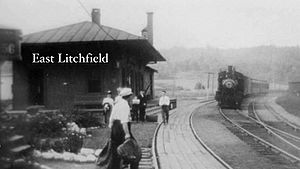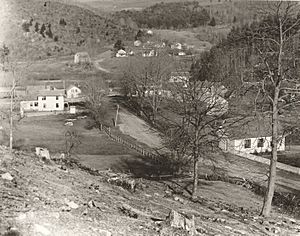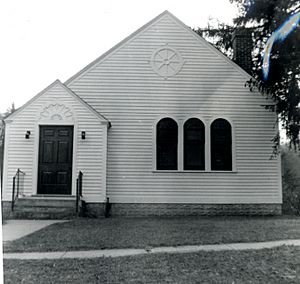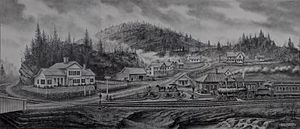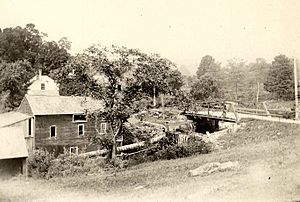East Litchfield Village, Connecticut facts for kids
East Litchfield is a small village in the town of Litchfield, Connecticut. It's not a separate town but part of Litchfield. It's located where important roads meet, connecting cities like Waterbury, Torrington, and Hartford. The Naugatuck River also flows through here, linking many communities. East Litchfield has been part of Litchfield since the town was first settled in 1721.
Contents
A Look Back at East Litchfield's History
East Litchfield has a long and interesting past. More than 3,000 years ago, Native Americans lived and hunted here. They found lots of wild animals and used natural stone like soapstone to make bowls and cups. They also found quartz, which they used for arrowheads. Much later, this quartz was even sent to Massachusetts to make sandpaper!
Early Settlers and the Railroad
When European settlers arrived, East Litchfield became a place for farmers and people who worked in mills. These mills used the power of the Naugatuck River.
A big change happened in 1849 when the Naugatuck Valley Railroad built a train station, called a depot, in East Litchfield. The train line went all the way to Winsted. This was a huge deal! Mills could easily send their products out, and people could travel.
Passengers could get off the train at East Litchfield and take a stagecoach to Litchfield center. This was popular for people visiting for summer vacations. Also, people going to the Harwinton Fair would take the train to East Litchfield. From there, they would catch a shuttle to the fairgrounds.
Busy Times by the River
The Naugatuck River was very important for businesses in East Litchfield. Many mills were built along its banks. Two of these were the Paige and Dains Paper Mill and Baldwin's Saw Mill. People even harvested ice from the river and stored it in a special icehouse built by the railroad company.
After the train depot opened, East Litchfield became a very busy place. It had many businesses and services:
- A hotel and restaurant called Scovill House
- A post office
- A blacksmith shop (where metal items were made)
- A harness shop (for horse equipment)
- A livery service (for renting horses and carriages) to Litchfield center
- Ferncliff Farm, which had a store and a cheese factory
- Mrs. Mark's variety store, located across from the depot
- A chapel (a small church)
- A one-room schoolhouse
- Icehouses
- A baseball field
- A lumber mill (for cutting wood)
- A grist mill (for grinding grain)
- A cider mill
- A paper factory
Changes Over Time
Most of these businesses disappeared after the train depot closed down. Today, the chapel is still standing, and only a few of the original village homes remain.
Notable Person
Austin Purves, a well-known artist from the town of Litchfield, lived in East Litchfield for many years.
Transportation
The Naugatuck Railroad used to run from Bridgeport to Winsted. In 1849, it opened a train station, or depot, in East Litchfield.


